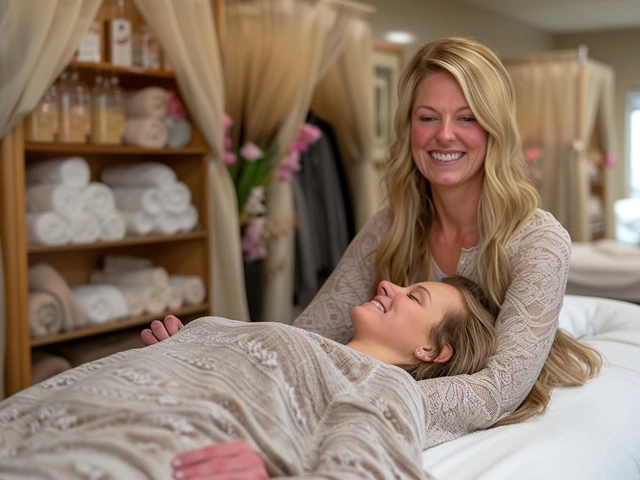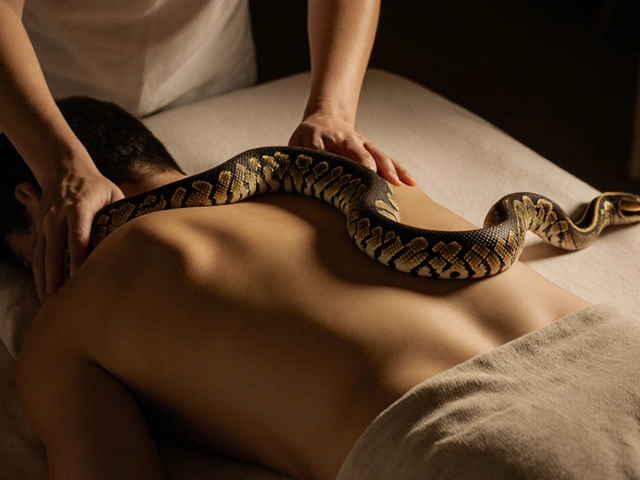Body Healing: Massage, Bodywork and Real Recovery
Some people stop chasing quick fixes once they find hands-on therapies that actually cut pain and improve movement. On this page you’ll find clear, practical articles about how different massages and bodywork methods help with stiffness, injuries, stress, and sleep. No hype—just short guides, real benefits, and what to expect from each approach.
We cover both gentle and deep styles. Want a soothing session to relax after a long week? Check warm stone, Lomi Lomi, or hammam pieces. Need targeted relief for knots or chronic pain? Look at trigger point work, Ortho-Bionomy, Rolfing, Hellerwork, or Feldenkrais. For cultural traditions and specialized care, read about Hilot, Amma, Laos massage, and blind massage. There’s also guidance on medical options like contractual tendon release and how palliative massage supports comfort near the end of life.
How to pick the right therapy
Start by naming your main problem: tight shoulders, postural pain, slow recovery after training, or emotional stress. Then match it to a style: deep structural work (Rolfing, Hellerwork) for posture and lasting alignment; gentle movement therapies (Feldenkrais, Ortho-Bionomy) for pain that flares with movement; targeted techniques (trigger point, Amma) for knot relief. Read a therapist’s bio—look for specific training, client focus, and real session descriptions. Ask about pressure level, session length, and follow-up care before booking.
Safety first: mention recent surgeries, blood thinners, or pregnancy when you book. If a technique feels worse after one session, check in with the practitioner—some soreness can be normal, but sharp or spreading pain is a red flag. For surgical options like tendon release, pair medical advice with rehab-focused bodywork to speed functional recovery.
Quick self-care you can try today
Try these small moves between sessions. 1) Desk quick-release: press your thumb into the tight spot near your shoulder blade for 20–30 seconds while breathing slowly. 2) Hip reset: lie on your back, cross one ankle over the opposite knee, and gently pull the uncrossed thigh toward you for 30 seconds. 3) Breathing reset: sit tall, inhale for four counts, exhale for six—repeat five times to calm muscle tension. These simple steps help hold gains from a professional session.
Use the articles on this tag to compare methods, read honest expectations, and pick techniques that match your goals. If you want targeted reads, start with pieces on trigger point relief, Ortho-Bionomy for chronic pain, or practical guides to Hilot and Lomi Lomi. Follow the short tips and you'll get more from every session—and fewer surprises along the way.

Rolfing: A Non-Invasive Approach to Body Healing
Hey there! I've discovered a new technique called Rolfing, a non-invasive approach to body healing that's really got me excited. This holistic therapy holds so much promise for us guys, and I couldn't wait to share it with you. It works by manipulating the body's myofascial structure, promoting wellness and balance. Ready to explore the world of Rolfing with me?

Discover the Healing Wonders of Craniosacral Therapy
Hello there! In today's post, I'm thrilled to uncover the healing wonders of Craniosacral Therapy. This unique alternative medicine is a gentle, non-invasive approach that is said to improve overall health and well-being by aligning your body's natural rhythm. Tune in as we dive into its benefits and potential for promoting relaxation and relieving tension. Trust me, it's going to be an exciting journey into the realm of transformative healing.
Categories
- Health and Wellness (148)
- Alternative Therapies (86)
- Massage Therapy (40)
- Travel and Culture (15)
- Beauty and Skincare (9)
- Holistic Health (8)
- Health and Fitness (5)
- Spirituality (5)
- Other (2)
- Personal Development (2)



